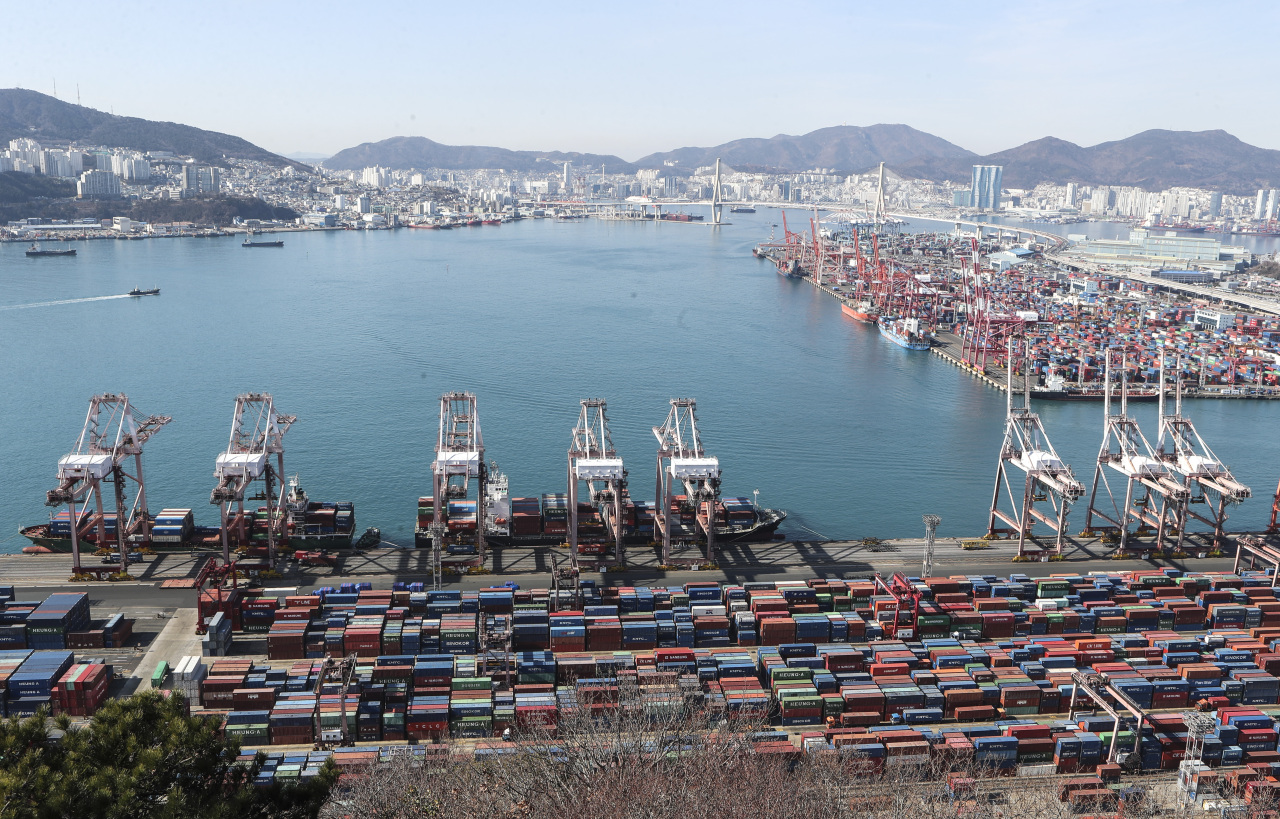
SEJONG -- The nation’s growth in industrial output marked the highest in 11 years in 2021 on the back of both economic recovery and the base effect, or rapid bounce-back from sagging performance in the pandemic-hit 2020, Statistics Korea data showed Friday
But indexes unveiled by the state-run agency suggest possible slowdown in the growth of production, retail sales and facilities investment for the coming months in 2022.
Korea saw industrial output grow 4.8 percent on-year in 2021, the highest since 6.5 percent in 2010.
Though industrial output had maintained positive growth since 2000, when the nation started compiling the relevant data, it fell for the first time by 1.2 percent in 2020 in the wake of COVID-19.
In 2021, output in the mining and manufacturing sector grew 6.9 percent on-year, 29.7 percent growth was reported in production of semiconductors and 4.6 percent in automobiles.
Output in the service sector posted a 4.3 percent growth, which was the highest since 6.7 percent in 2007. That included 8.5 percent growth in finance and insurance, 6.9 percent in art, sports and leisure and 6.5 percent in logistics.
Retail sales also grew by the most in 11 years with increase of 5.5 percent last year. Sales increased in segments such as clothes, car fuel and home appliances.
By seller, retail sales increased by 21.7 percent at department stores, 13.2 percent at duty-free shops and 3.4 percent at convenience stores. But large discount chains posted minus 1.7 percent in growth.
Businesses’ facilities investment grew 9 percent on-year, the highest since 14.4 percent in 2017. A noteworthy growth was seen at investment in industrial-purpose machines like precision instruments with 13.2 percent.
Despite the robust performance in output, sales and investment throughout 2021, the composite leading indicator dropped for six consecutive months from July to December.
The CLI signals economic conditions in the coming months, which gauge sectors such as the volume of sales and inventories.
The index continued to fall between February and May 2020, and climbed for 13 consecutive months from June 2020 to June 2021.
But it fell by 1.6 percentage points from 102.8 in June to 101.2 in December 2021. The CLI is calculated on a comparitive basis, with 2015 levels set at 100.
By Kim Yon-se (kys@heraldcorp.com)
But indexes unveiled by the state-run agency suggest possible slowdown in the growth of production, retail sales and facilities investment for the coming months in 2022.
Korea saw industrial output grow 4.8 percent on-year in 2021, the highest since 6.5 percent in 2010.
Though industrial output had maintained positive growth since 2000, when the nation started compiling the relevant data, it fell for the first time by 1.2 percent in 2020 in the wake of COVID-19.
In 2021, output in the mining and manufacturing sector grew 6.9 percent on-year, 29.7 percent growth was reported in production of semiconductors and 4.6 percent in automobiles.
Output in the service sector posted a 4.3 percent growth, which was the highest since 6.7 percent in 2007. That included 8.5 percent growth in finance and insurance, 6.9 percent in art, sports and leisure and 6.5 percent in logistics.
Retail sales also grew by the most in 11 years with increase of 5.5 percent last year. Sales increased in segments such as clothes, car fuel and home appliances.
By seller, retail sales increased by 21.7 percent at department stores, 13.2 percent at duty-free shops and 3.4 percent at convenience stores. But large discount chains posted minus 1.7 percent in growth.
Businesses’ facilities investment grew 9 percent on-year, the highest since 14.4 percent in 2017. A noteworthy growth was seen at investment in industrial-purpose machines like precision instruments with 13.2 percent.
Despite the robust performance in output, sales and investment throughout 2021, the composite leading indicator dropped for six consecutive months from July to December.
The CLI signals economic conditions in the coming months, which gauge sectors such as the volume of sales and inventories.
The index continued to fall between February and May 2020, and climbed for 13 consecutive months from June 2020 to June 2021.
But it fell by 1.6 percentage points from 102.8 in June to 101.2 in December 2021. The CLI is calculated on a comparitive basis, with 2015 levels set at 100.
By Kim Yon-se (kys@heraldcorp.com)







![[KH Explains] How should Korea adjust its trade defenses against Chinese EVs?](http://res.heraldm.com/phpwas/restmb_idxmake.php?idx=644&simg=/content/image/2024/04/15/20240415050562_0.jpg&u=20240415144419)











![[Today’s K-pop] Stray Kids to return soon: report](http://res.heraldm.com/phpwas/restmb_idxmake.php?idx=642&simg=/content/image/2024/04/16/20240416050713_0.jpg&u=)